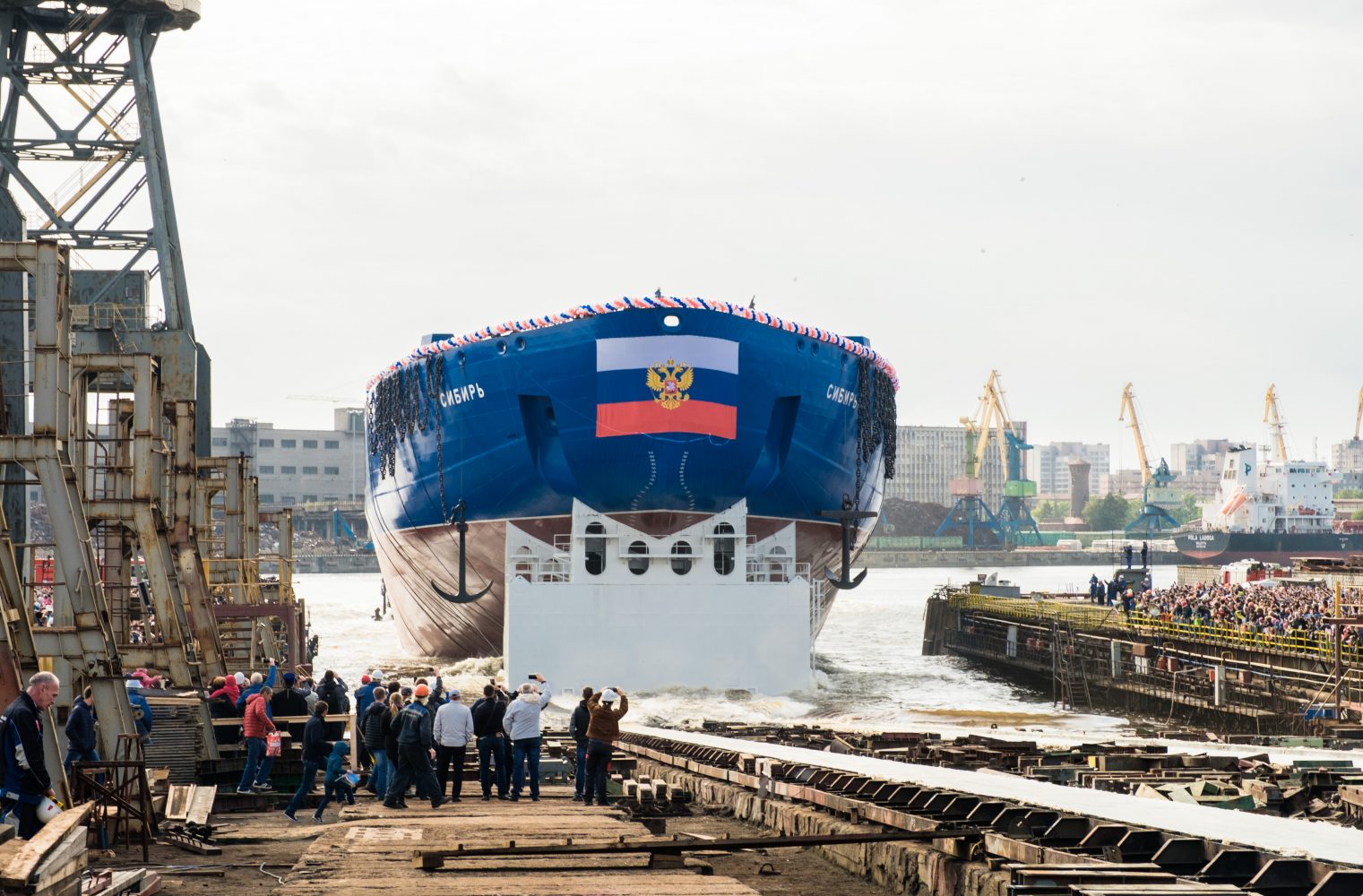
World’s Most Powerful Icebreaker Floated Out
back to contentsConstruction will continue afloat. The Sibir icebreaker will improve Russia’s global position as a maritime power and help achieve many goals of the country’s economy, Russian President Vladimir Putin noted.
According to Rosatom’s CEO Alexei Likhachev, Sibir has a namesake that was commissioned in 1977. “It did a good job and set an absolute record by reaching the North Pole in May. I wish its successor to continue establishing world records for the glory of this shipyard and everyone who works at it,” Mr. Likhachev said.
Following the float-out, the icebreaker will be fitted out afloat and commissioned in November 2020. The vessel belongs to the Project 22220 series. The contract between Atomflot and the Baltic Shipyard provides for the construction of three nuclear icebreakers of the same series – Arktika, Sibir and Ural. Arktika and Sibir have already been put afloat, while Ural is still on the stocks. All the vessels have been designed by Aisberg Design Bureau. The Project 22220 icebreakers will be powered by two nuclear reactors, with a 175 MW propulsion unit RITM-200 acting as a primary source of steam. “RITM is AEM’s first reactor manufactured totally in-house, from design to commissioning,” said Andrei Nikipelov, CEO of AEM (Rosatom’s mechanical engineering division). Due to its one-off integrated design, RITM-200’s capacity has been raised to 175 MW while its weight has decreased, with the dimensions shrunk twofold against the previous reactor.
Project 22220 vessels will be the largest and most powerful nuclear icebreakers in the world. Their double-draft design allows for the operation both in Arctic deep waters and estuaries of polar rivers. Sibir is 173.3 m long (with a waterline length of 160 m) and 34 m wide. It has a midship depth of 15.2 meters (from the bottom to the upper deck), a designed draft of 10.5 m, an operating draft of 8.55 m, and is capable of breaking 2.8-meter ice. The vessel will have a crew of 75 people and a service life of 40 years. The multipurpose Project 22220 icebreakers are intended for escorting vessels and ship convoys all year round in the Western Arctic and shallow areas of the Yenisei River and the Gulf of Ob. The new vessels will be able to tow ships and other floating structures, and perform rescue operations both on the ice and in open waters. It is noted that the icebreaker can travel at full capacity through consolidated pack ice with a maximum thickness of 2.8 meters at the speed of 1.5–2 knots. This exceeds the icebreaking capacity of diesel-driven icebreakers by far. The main advantage of nuclear-powered icebreakers is energy efficiency, which makes them capable of operating for several years without refueling. In addition, the fuel stock occupies no space on board, which makes it possible to increase the payload and stay at sea for more than a year.




